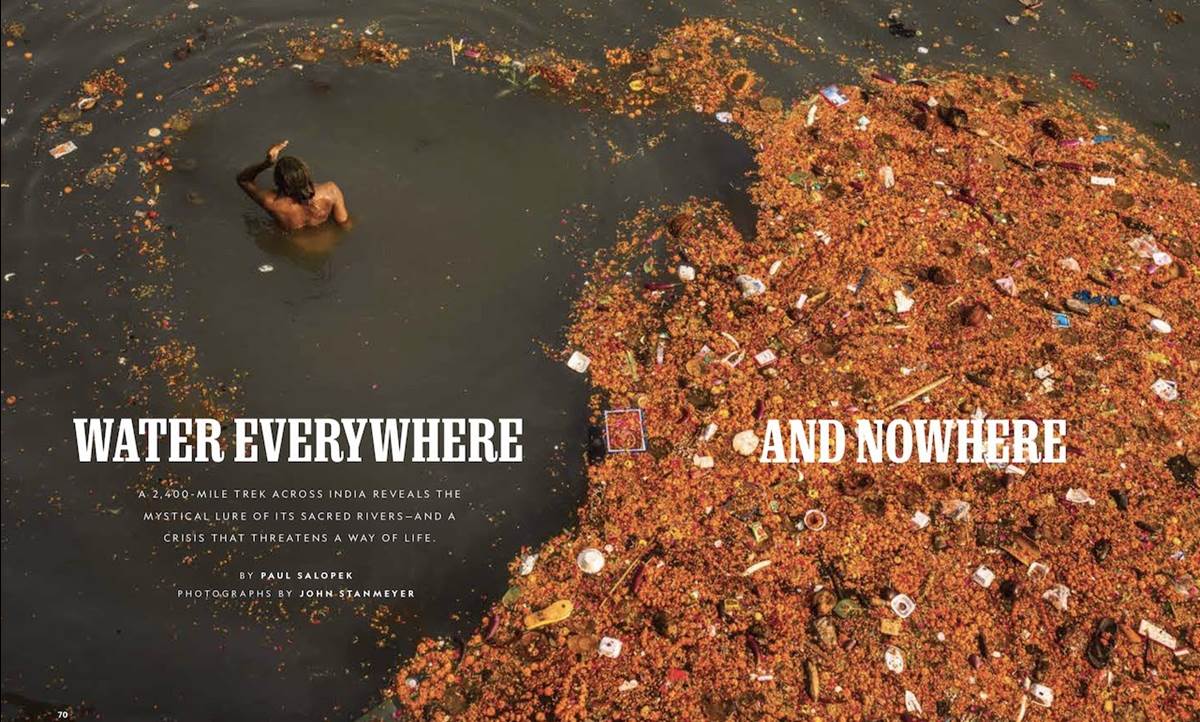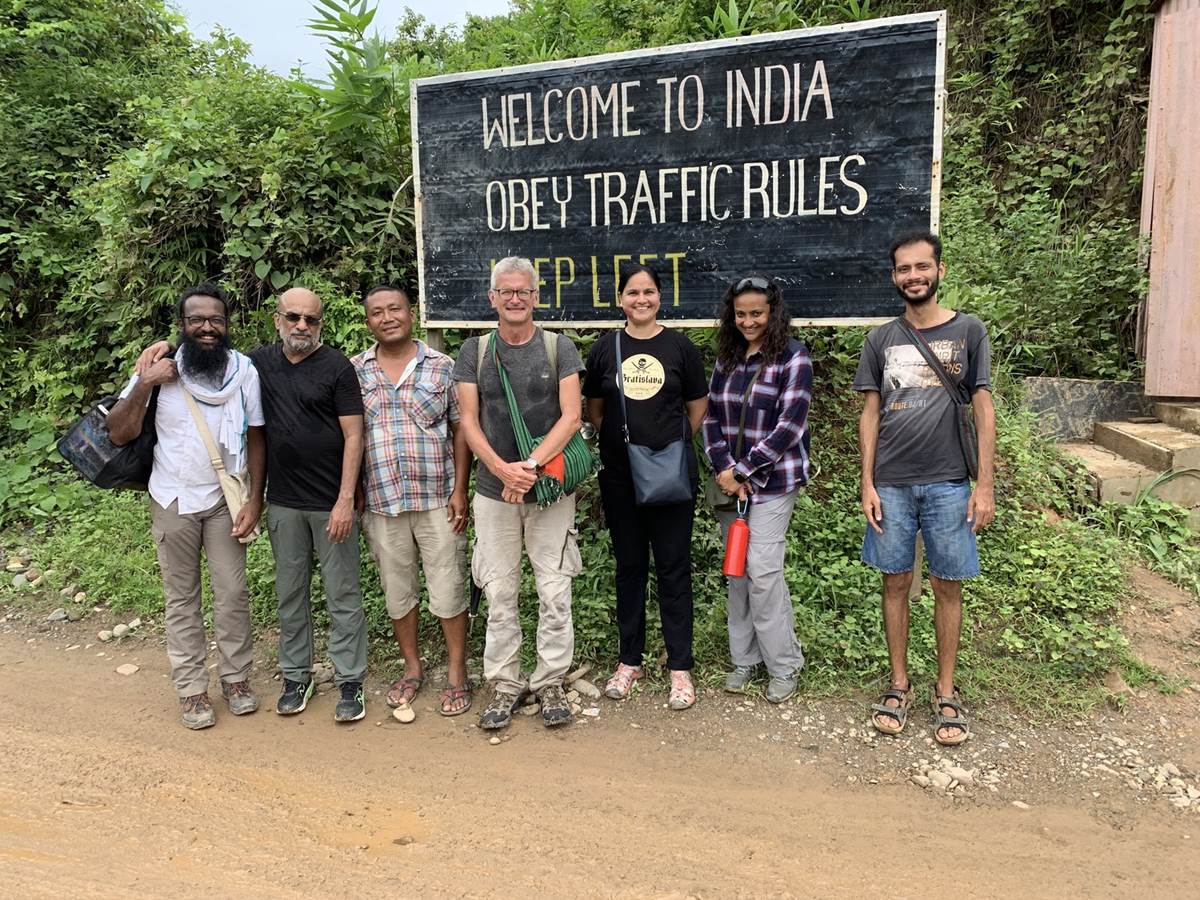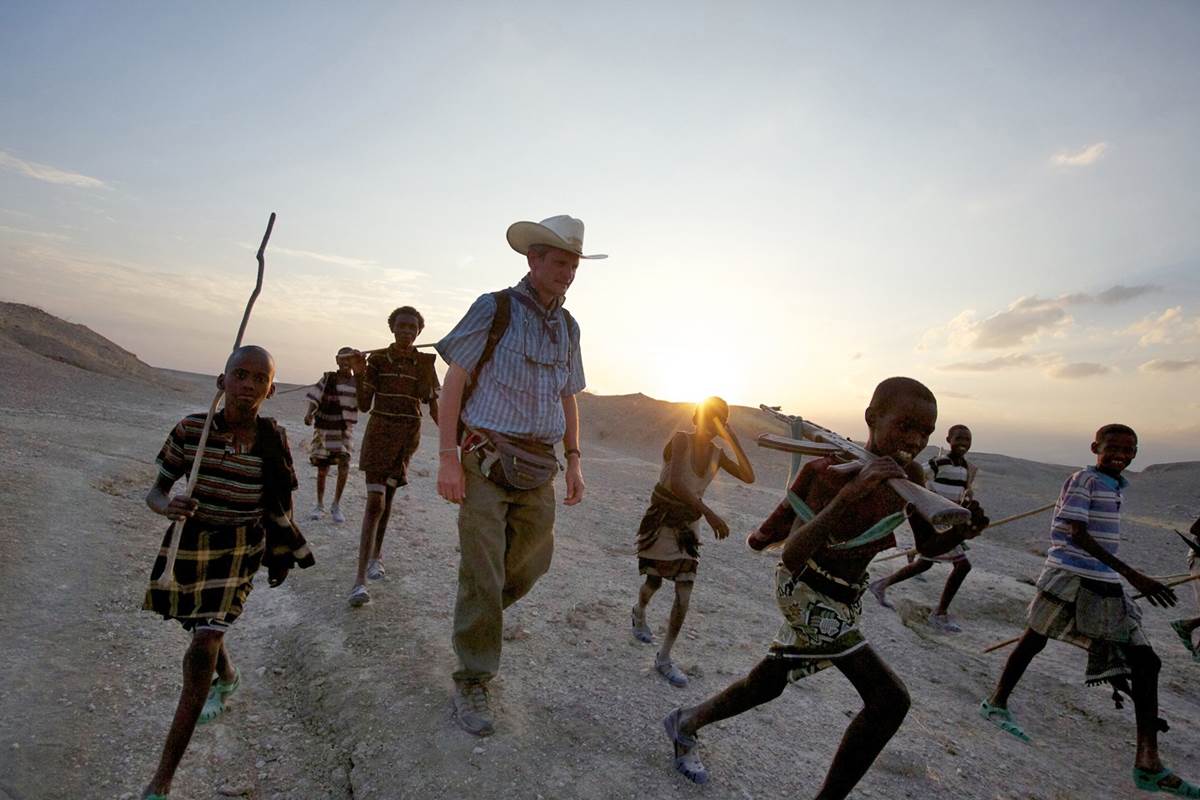National Geographic’s Out of Eden Walk Part 1: Water Everywhere and Nowhere

Photo Source: National Geographic
Pulitzer Prize-winning journalist Paul Salopek is in the middle of a walk around the world, setting off from Ethiopia in 2013 and traveling through India in 2018 and 2019. The Out of Eden project is a National Geographic sponsored exploration of the same migratorial path our shared ancestors traversed 60,000 years ago. The latest article, Water Everywhere and Nowhere, is available in the August 2020 issue of National Geographic magazine. Paul recently took time away from his adventure to discuss the team’s most recent findings in the first of three Out of Eden virtual live events about his time walking across India, which is now available on YouTube.
”It was seventeen-months across India,” Paul Salopek shared at the start of the event. “So many subcultures, ethnicities, landscapes that it… There are planes of India that have been farmed for 5,000 years… The angle to attack this storytelling thread through this very deep mosaic of stories, I didn’t have an idea of what the story angle would be until maybe a few months into the project. I decided to settle on rivers because there are few countries in the world where rivers so define the borders of a landscape, the identities of a people.” The rivers of india not only help tell the stories of the people who live along their banks, but also a looming water crisis that affects 1.3 billion people. “Almost everybody I talked to on the walking trail… you speak long enough, water will percolate to the surface as a problem.”
Indian journalist Prem Panicker joined the team and found he was able to better understand his own country through the experience. “I’ve been a reporter for most of my adult life. The thing about being a reporter is you're experiencing something external to it... You have a very narrow focus,” he shared about the fast-paced life of getting a call, covering an event, and then writing it. Out of Eden gave him the ability to do slow journalism with Paul. “It was an entry into a world that was mine and that I had completely ignored… You realize that the vast majority of people in this country really don’t give a damn. Their occupations are existential and that’s what they care about… You realize that as a reporter, you’ve been living in a bubble all this time.”
Siddharth Agarwal is another India native who was already on his own walk of India before he heard about Paul and the Out of Eden project. “I was walking in India before I joined Paul on his walk and I remember the time that I started my walking back in 2014. Someone had introduced me to the writing Paul had done, the New York Times article.” Another National Geographic Explorer, Arati Kumar-Rao, had to suddenly leave the project and Siddharth joined in her place. “I wanted to join him and here I was getting a message to join him…From what was supposed to be a few days of work, it became something else... I had never been a journalist, I was getting this incredible crash course in journalism from Paul.”

Photo Source: National Geographic
National Geographic Photographer John Stanmeyer was along for the journey to help capture photos of the events, but he wasn’t able to join the team on foot. “What makes a National Geographic story or meaningful storytelling is lateral visuals with the text, so we’re like a symphony with many instruments working in cohesion.” John followed behind Paul’s caravan on wheels rather than walking across India. “I’ve been to most of the places that Paul walked in and it took a little bit of time because he’s ahead of me.”
Camilla Ferrai, an Italian photographer and videographer, shared her experience joining Paul’s journey and assisting John Stanmeyer. “It was my first time going to India and it was my first time working on the Out of Eden project… The idea for me was how do I portray India as a person who's never been there before? Who doesn’t understand the culture in a way that the locals do? My role in the assignment was to accompany John’s images with vertical videos… The idea behind the videos was to find a narrative behind the everyday life on the rivers… What I tried to do was to recreate and portray the evocative aspects of the land and retell the issues we were encountering along the rivers.” One of the best places for Camilla to interact with the local cultures of India ended up being Chai shops. “Chai stops and chai shops were really a puzzle as a symbol of everyday life. If you stopped by a chai shop and stood there for an hour or so, you could really understand life there so much more than driving in a car.”
Journalist and peace studies scholar Priyanka Borpujari first met Paul Salopek when he was giving a talk at Harvard. At the time, she was considering hitchhiking across the United States and had been warned not to by everyone except Paul, who told her she should do it. She told him to give her a call if he was ever in India and he stayed true to that promise. “We really got to see the margins of India, the edges of India, and walking along India’s rivers meant we got to see the communities living on the margins… They’re on the edges of privilege. Communities living along the river are the most resilient.” Priyanka saw first hand how pollution is causing communities to have to rebuild their lives. “It was quite eye opening to walk into a story and yet not walk into one specific story only.”

Photo Source: National Geographic
The walk took the team through some incredible communities where they were embraced, housed, and fed by people who had very few possessions. But these moments were also juxtaposed against crime-ridden areas where their lives were at risk by walking on foot. “I remember walking through parts of India with my colleagues and there are parts of India that are known for being tough and rough,” Paul shared. “I would literally have a partner on the phone with their loved ones in a big city telling them, yes, I’m still alive… I think the great gifts of the many of the walk is that central one of human connection face-to-face that is so essential to storytelling.” The story that Paul is telling is one that can only be told through human connection. “What sustains the walk every morning to see a new landscape is that affirmation of the yes of human connection… I’m talking to you as somebody who is sitting at the terminus of a walking trail that is now over 12,000 miles… I would not be alive and breathing if it weren’t for the hundreds of strangers.”
Click here to learn more about Out of Eden, including stories, photos, and videos from the journey so far.
Fans can register to join the next two live Out of Eden events:
